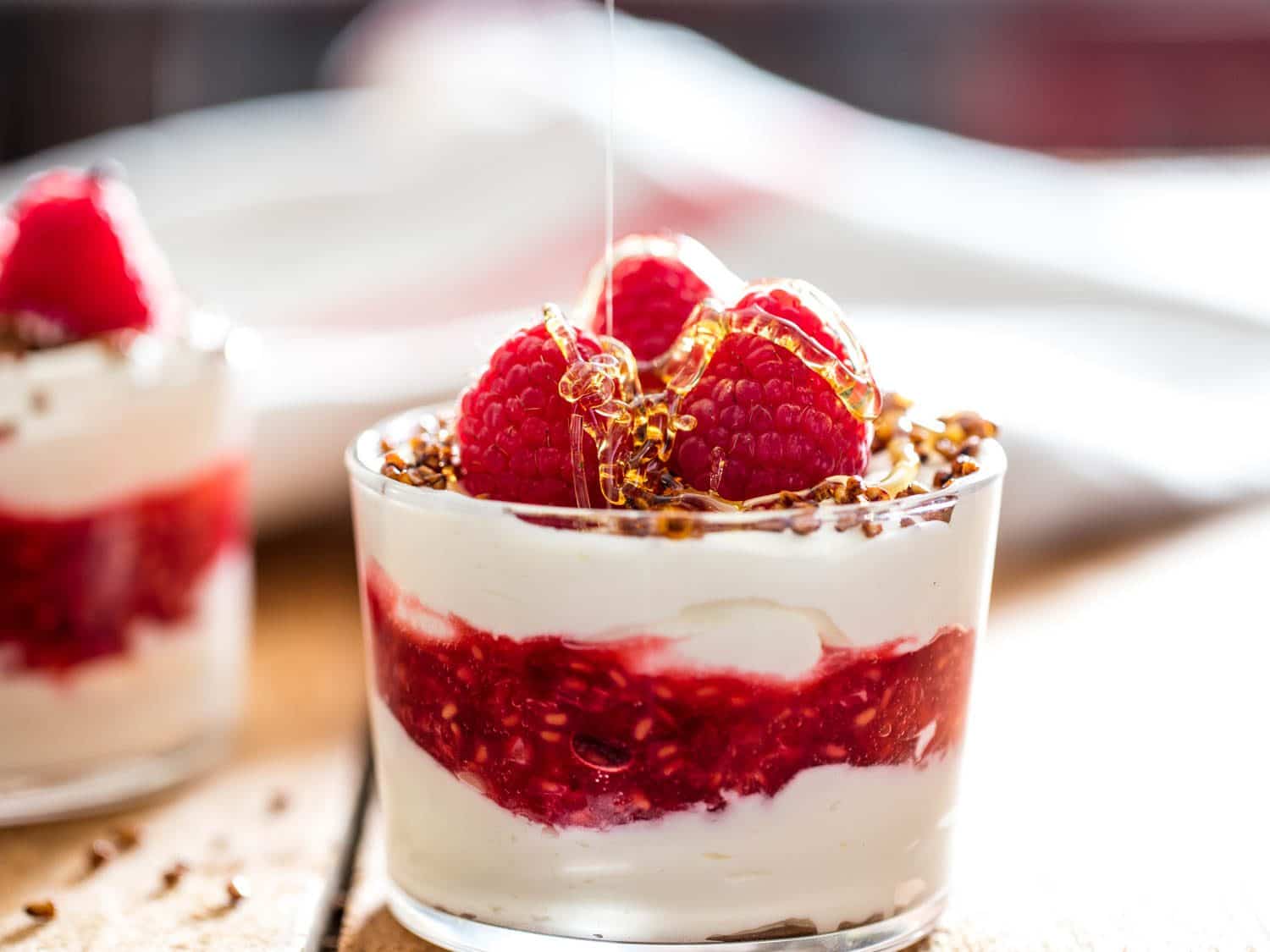
[Photographs: Vicky Wasik]
Scotland, a country with a cuisine best known for mixing sheep organs with oatmeal and stuffing it all into the animal’s stomach, is not a place most people look for culinary inspiration. Even among their desserts, the one that has best managed to grab international attention is nothing more than a battered and fried Mars bar. Created in a chip shop by a very bored, or possibly very stoned, fry cook, it reaches a level of such excessive junkiness that Mars itself felt the need to distance itself. Such an unhealthy lifestyle, the candy company said, wasn’t something they could support.
Of course, delicious Scottish food does exist. I’ll come back another day to defend haggis, but today I’m here to champion a Scottish dessert: cranachan. Even if it had nothing more going for it than that famed fried candy bar saturated with fish-tainted oil, it’d win on name alone. Cranachan. It’s best said with a guttural growl, the consonants scraping against each other like sparks crackling in a peat fire.
Cranachan, though, has far more to sell it than just its name, all of it distinctly Scottish. There are toasted oats, plump raspberries, and thick dollops of cream punched up with a wee dram of Scotch whisky and a drizzle of honey.
It’s a dessert that lends itself to variation; there’s simply no one right way to make it. Many versions are layered like a trifle, the raspberries plunked between blankets of cream. Others take a fancier approach, pureeing the berries into a coulis, then spooning that on the cream. Yet more mix it all together to make a pink-tinged dessert. You have just as many options when it comes to the whisky you use (and how much), the type of honey, and how you handle the oats.
My version starts with the oats. Many recipes simply toast them, raw and dry. I tried it that way using both rolled and steel-cut oats. If I’m being diplomatic, I’d say that’s one way to do it. But I’d say it while stretching out the words and raising my eyebrows, to let you know I don’t think it is. They come out too tough like that.
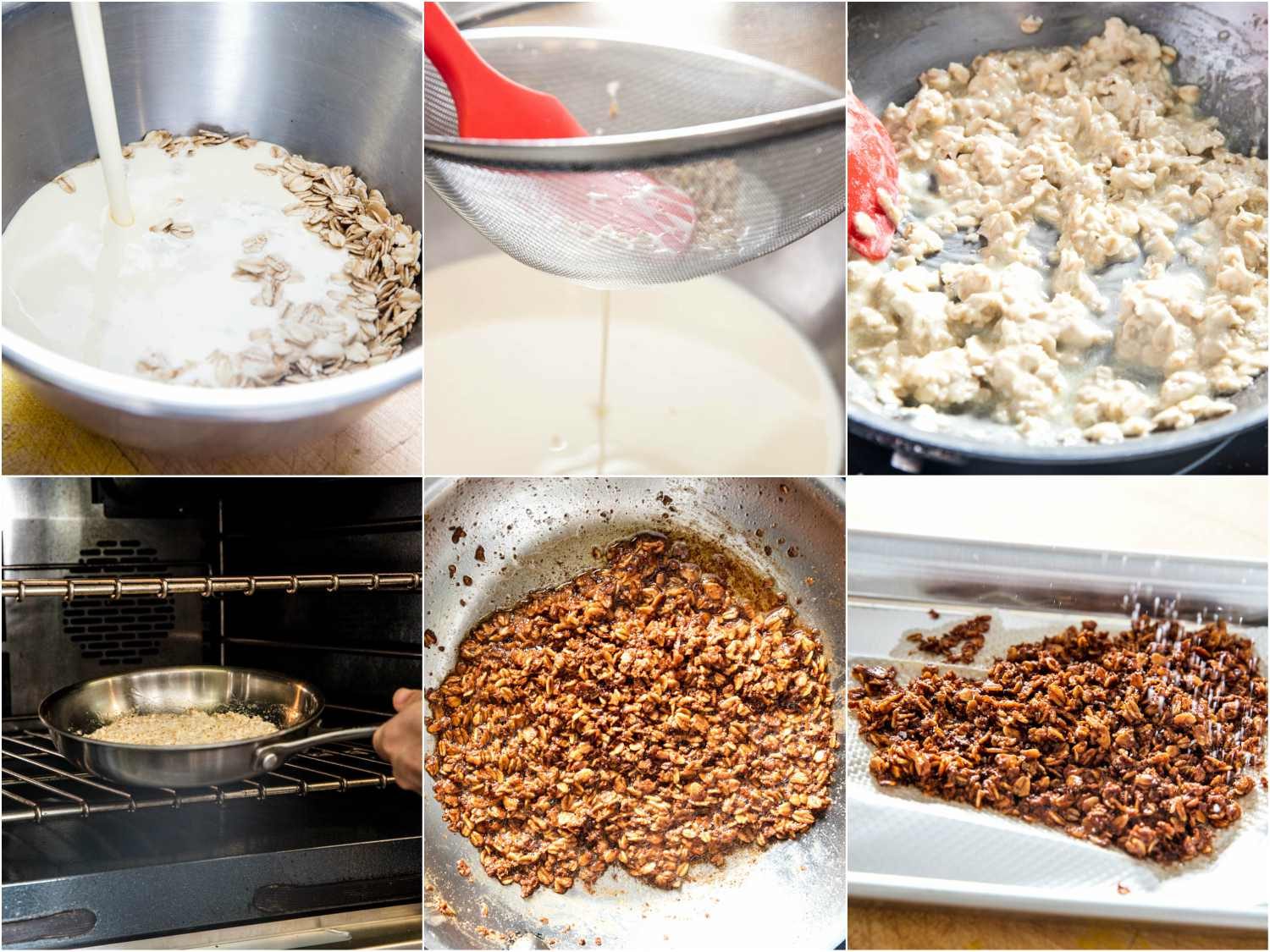
Tenderizing the oats first is a very helpful step. I borrowed a page from Stella’s granola recipe, in which she soaks her oats in buttermilk before toasting them. For my cranachan, I just use the cream I’m going to eventually whip, soaking the oats in it until softened, then straining them, pressing to extract as much cream as possible. I’d like to think the cream also takes on a tinge of oaty depth, but I don’t actually think it’s all that noticeable.
Next I toss the oats in melted butter and toast them in the oven until deeply browned. The “deeply browned” part is important, a discovery I made one day when I accidentally left a pan of oats in the oven for a few extra minutes. They teetered on the edge of being burnt, a slight bitter smell wafting through the kitchen. They were all I had, so I used them anyway and was amazed to discover how well the over-roasted oats worked with the sweet honey and smoky Scotch flavors, all cast against a backdrop of mild cream. This is a dessert with very few components, so making sure each has some personality goes a long way.
Once baked, the oats are delightfully crisp without any toughness. The oats are the most savory component of the dessert, so they’re made all the better with a generous sprinkling of salt.
In Scotland, raspberries reach their peak in the warmer months, meaning cranachan is traditionally a summertime dessert. But these days companies do such a good job of harvesting and transporting the delicate berries that great ones can be found in pristine condition year-round.
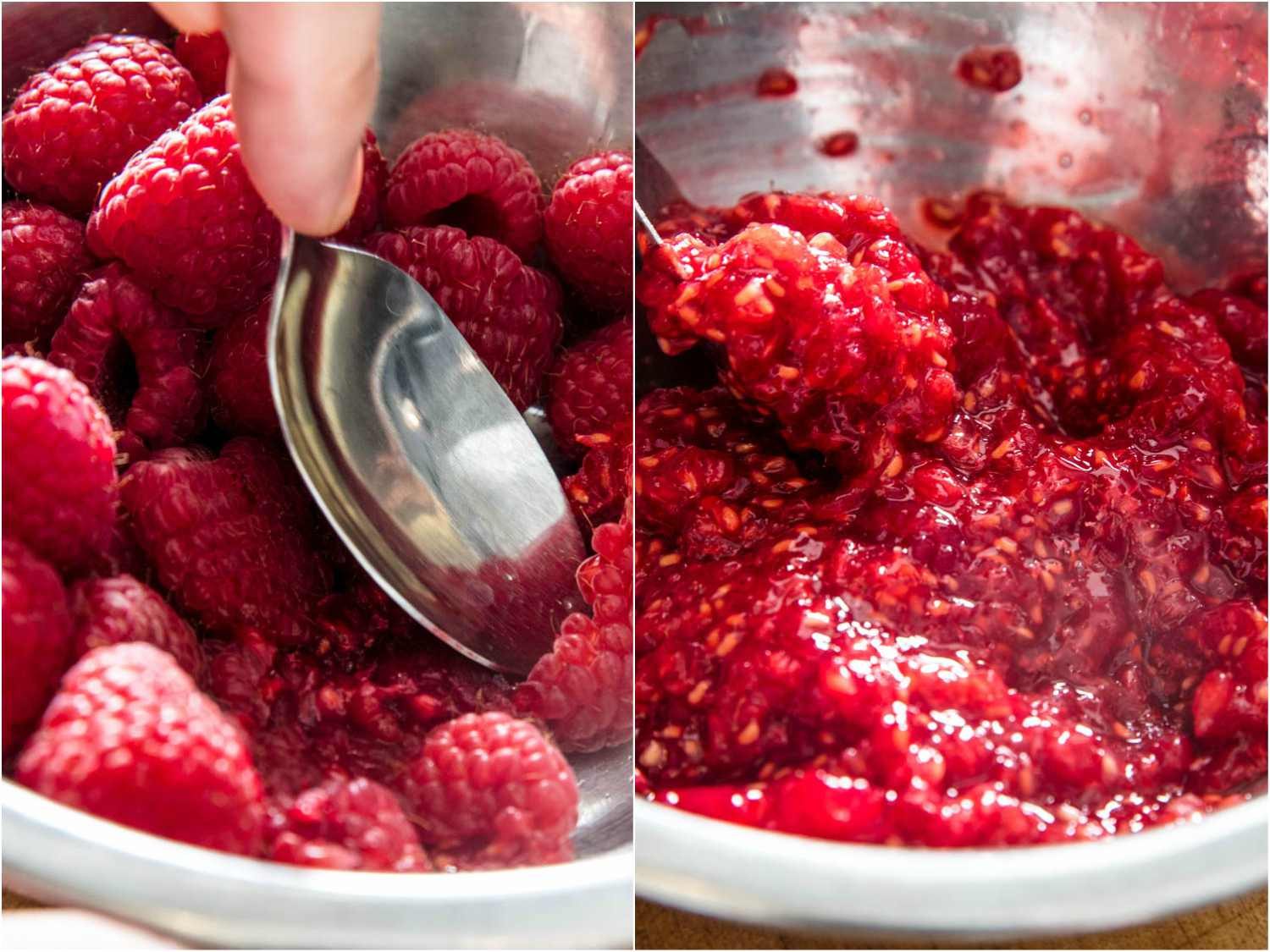
I played with different ways of handling the berries, doing everything from making a fancy coulis to leaving them entirely whole. In the end, I went with two approaches. I crush most of them with a spoon for a rough puree, brightening it with just a splash of lemon juice. Then I leave a handful whole to garnish the top of each dessert.
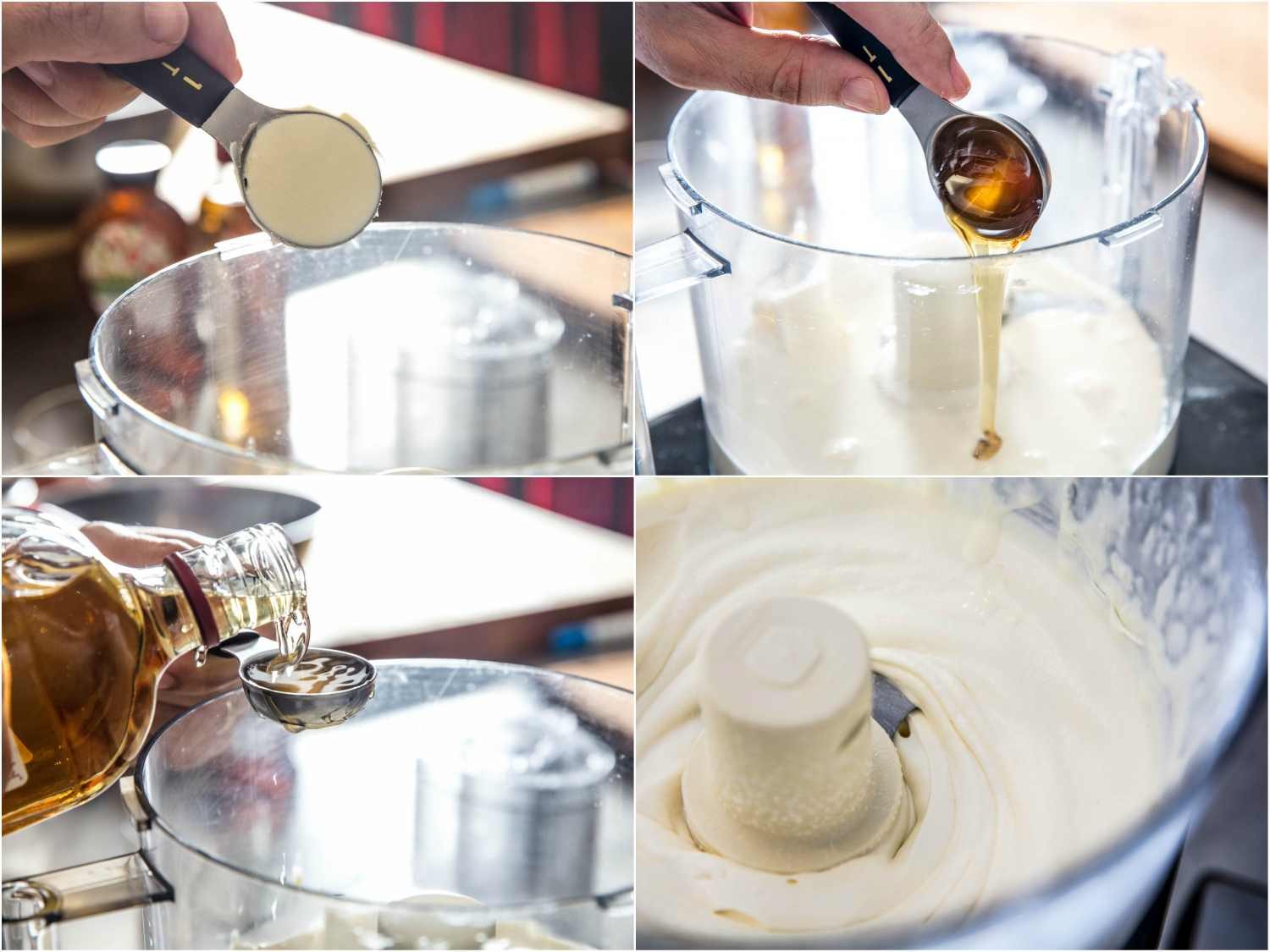
There are a few ways to go with the cream. My ideal version has whipped cream so thick it’s practically a mousse. The easiest way to get that texture is to beat the cream in a food processor, which aerates it far less than a whisk or beaters do. The result is denser and more stable, allowing you to make and assemble the cranachan farther in advance without a loss in quality. That said, you can beat the cream with a stand mixer, electric beaters, or with a whisk by hand and still get great results.
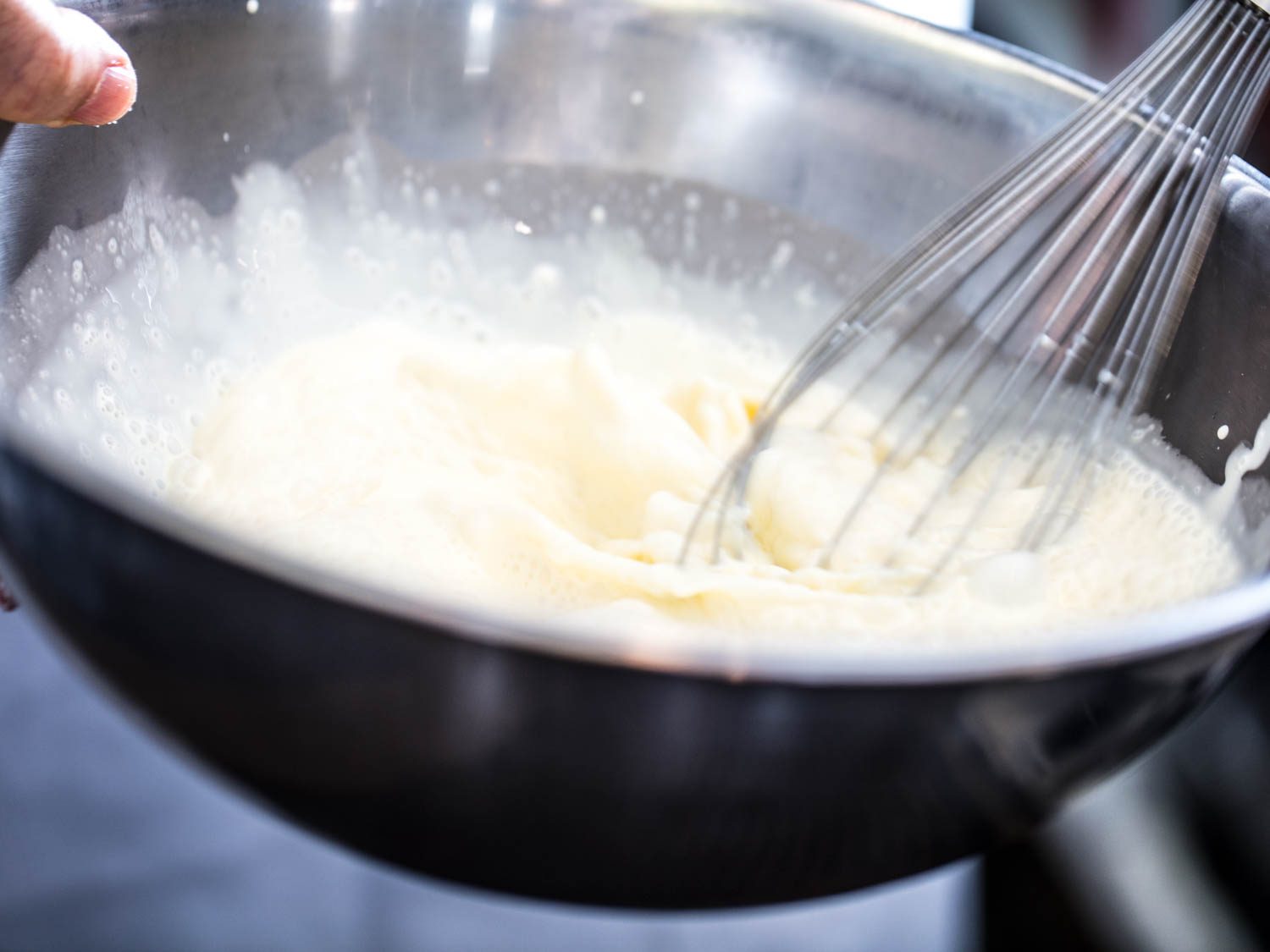
To enhance that rich and thick creaminess even more, I work in a couple tablespoons of mascarpone. It’s an optional ingredient, but one that makes the cream even more like a mousse.
Two more critical things go into the cream. The first is a dose of Scotch. Now, how much and what kind of Scotch is one of those questions no one can answer but yourself. My recipe gives quantities, but they’re just suggestions. I tested the cranachan with everything from a pricey bottle of deeply peaty Lagavulin, a single malt that really shouldn’t be squandered in a dessert like this, to some Dewar’s, which is a far lighter and more affordable blended Scotch with notes of honey.
Most of my tasters preferred the lighter, fruitier Dewar’s, but I could go either way. I thought the medicinal peaty kick of Lagavulin was good too, though I’d probably seek out a less expensive blended option next time no matter what.
The quantity of whiskey people preferred was also a debate. Some liked the gentle whiff of smoke that just a smidge of whisky added, the effect similar to catching the scent of a wood fire puffing from a nearby chimney while out on a winter stroll. Others wanted a boozier hit, one that sets the fire ablaze right in their own stomachs. I landed in the middle, opting for the Scotch to be distinctly present, but not so much that it overshadowed everything else. The honey helps keep its potency in check, and gives the dessert the only overt sweetness it has, especially since the berries tend to lean sweet-tart.
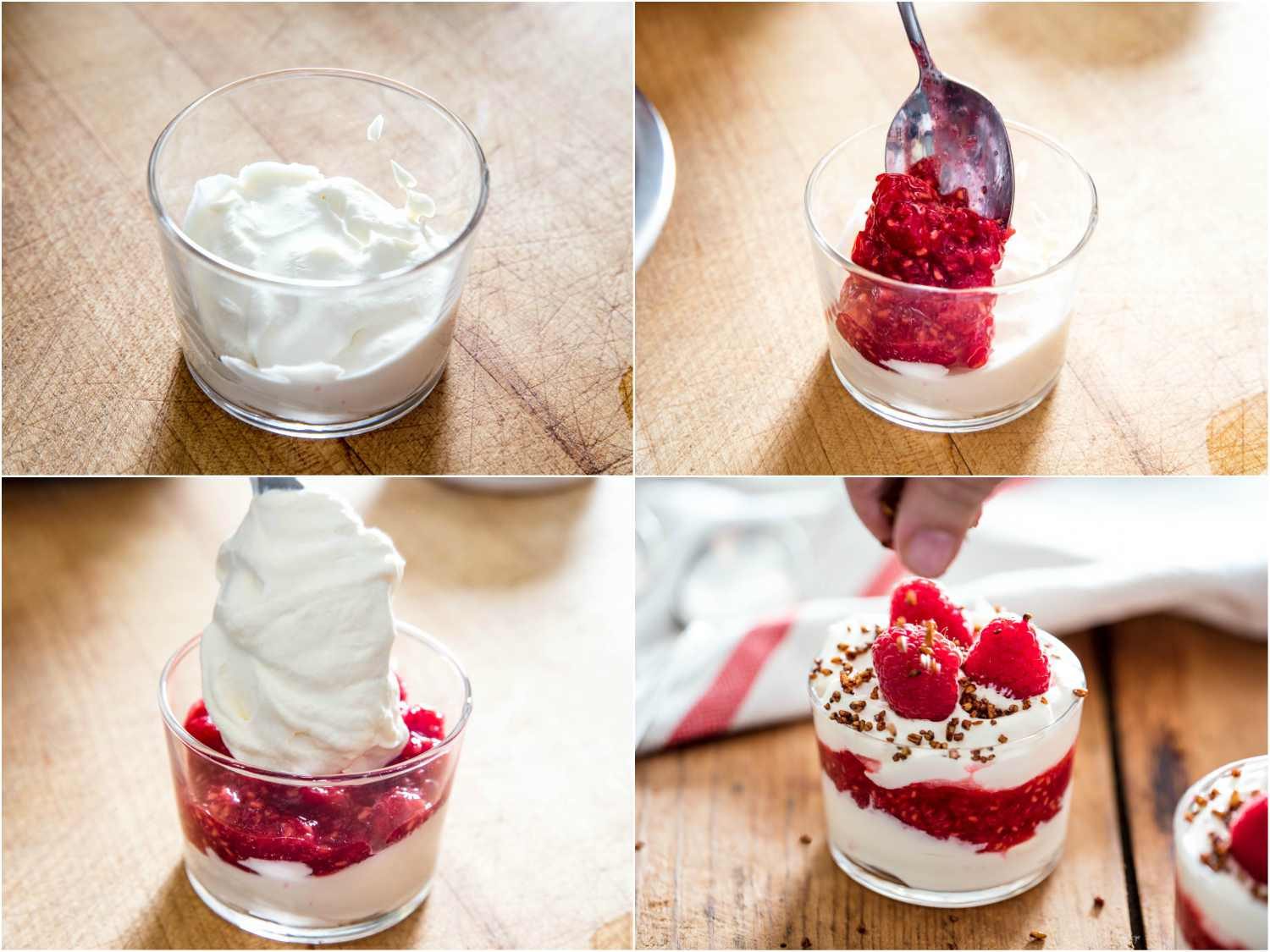
Once all the components are ready, simply layer them into a glass, plop the whole raspberries on top, and finish it with a scattering of toasted oats and an extra drizzle of honey.
Every bite is pure Scottish flavor, and that’s not a bad thing at all.
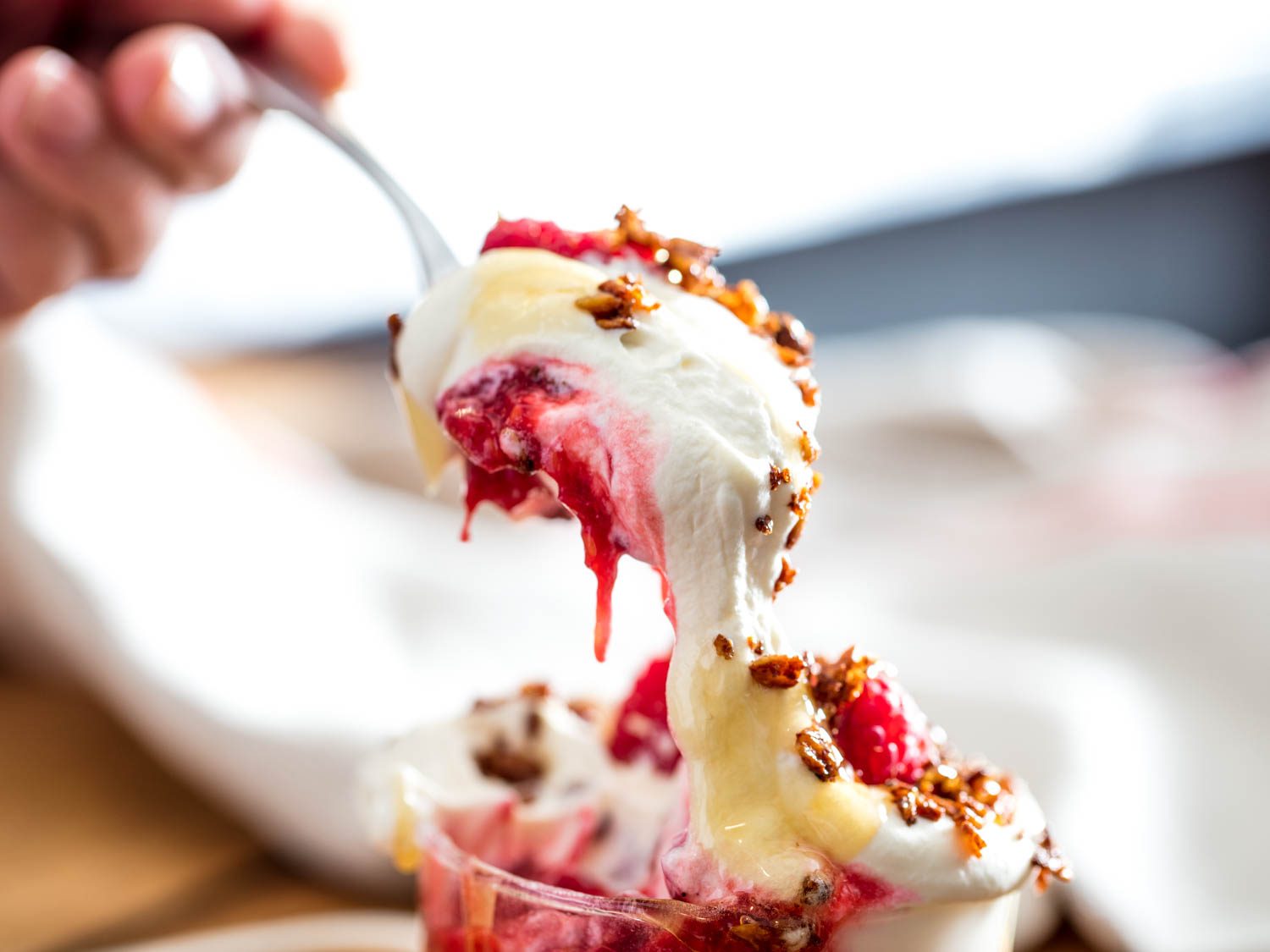
Source link